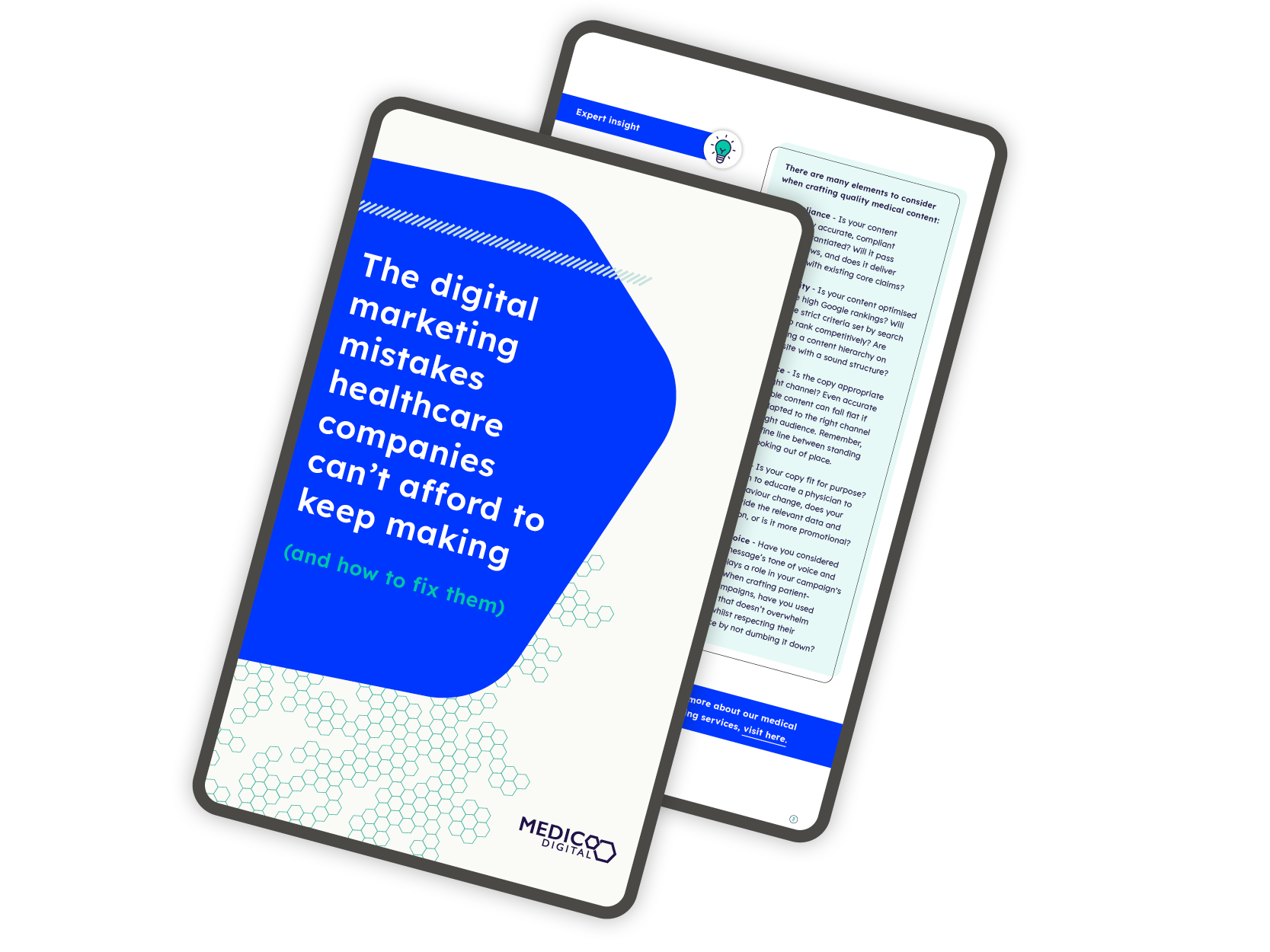User experience is key
With mobile searches now accounting for over half of online searches, search engines are penalising websites that aren’t mobile responsive, as well as other factors that contribute to poor user experience such as slow website speed.
– Compress heavy images
– Clean out your media libraries
– Check Google Webmaster tools and Google’s Mobile-Friendly Test to identify which images are slowing down page load.
Audit your metadata and URLs
Editing your metadata will have an impact on search performance, so make sure it’s relevant to your content and includes reference to your keywords.
Duplicating phrases may lead to lower ranking and more importantly, confuse the searching patient. Webmaster Tools can alert you to pages that appear as duplicated content, either due to replicated copy or metadata.
– Remember title tags and meta descriptions should differ, page to page
– URLs should contain reference of keywords
– Maintain a consistent URL structure
Research your keywords
Doing some keyword research is essential to make sure your time SEOing is spent wisely! Even if you’ve spent years in a given industry, your intuition is not enough to cover all angles as search behaviour constantly evolves. Here’s a list of some tools to help:
– Google Trends and Google Keyword Planner (Adwords) can help unearth untapped key phrases that may not represent your core practice but can be used to target patients.
– Check Webmaster tools to see where you’re website ranks against certain keyword queries. By filtering by the number of impressions you can get a sense of the most popular keywords/phrases to compete (or not compete) for.
– Analyse competitor keywords by viewing the source code on their website. Simply right-click on the background of a web page and click ‘View Source’, and then press ‘CTRL + F’ to perform a search for ‘keywords’.
Watch out for 404 and 500 error codes
Check webmaster tools regularly for 404 (page not found) and 500 (internal server error) codes. Identifying these pages and redirecting broken links will help to improve user experience – a big tick for search engines.
Build those links!
Linkbuilding is an important part of any SEO campaign.
Search engines will reward sites that they deem to have credibility. One way of gaining credibility is to get inbound links or citations from other websites to yours. Each inbound link is perceived as a recommendation and will pass ‘page rank’ to that particular page. Inbound links receive more page rank (value) if:
– The link comes from a site with a strong domain authority (high trust score)
– The link comes from a contextual source
– The link is anchored into the particular keyword phrase you’re trying to achieve ranking for
– The link isn’t reciprocated
Links from low-quality websites can however be perceived as spam and have detrimental effect on you ranking. For healthcare SEO this is incredibly important.
Increase that internal linking…
Internal linking increases page views per visit, increases ranking signals for those pages you link to and is generally an easy but effective hygiene factor when it comes to SEO. Include them where appropriate and make sure your anchor text makes sense. It needs to create the right context for the target page.
Content is KING!
Making the most of the copy on your web page is important for search and user experience.
Generally, Google won’t index pages with less than 300 words of copy so be detailed with the descriptions on your treatment and condition pages, trying to include a high density (between 3-5%) of your keyword phrases.
Where possible, use keywords within the headings and subheadings on the page as these are attributed more value than the body text. Keywords placed higher up in the text are also given more value, and anything much further down the page or hidden on first view will be seen as less important.
Name your images
Google can’t read images so make sure you name them correctly. Again, use keywords in the image names, descriptions and alt tags to help search engines understand what that image is.
Other things to consider:
Social signalling, Google+, SSL certificates, video, bounce rates




 Download for FREE
Download for FREE 